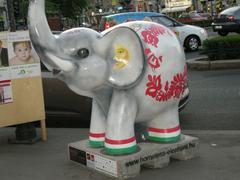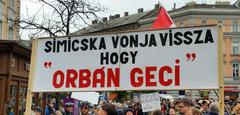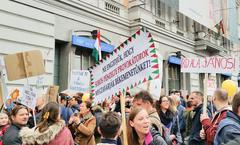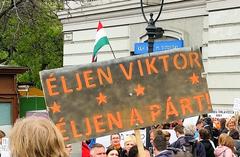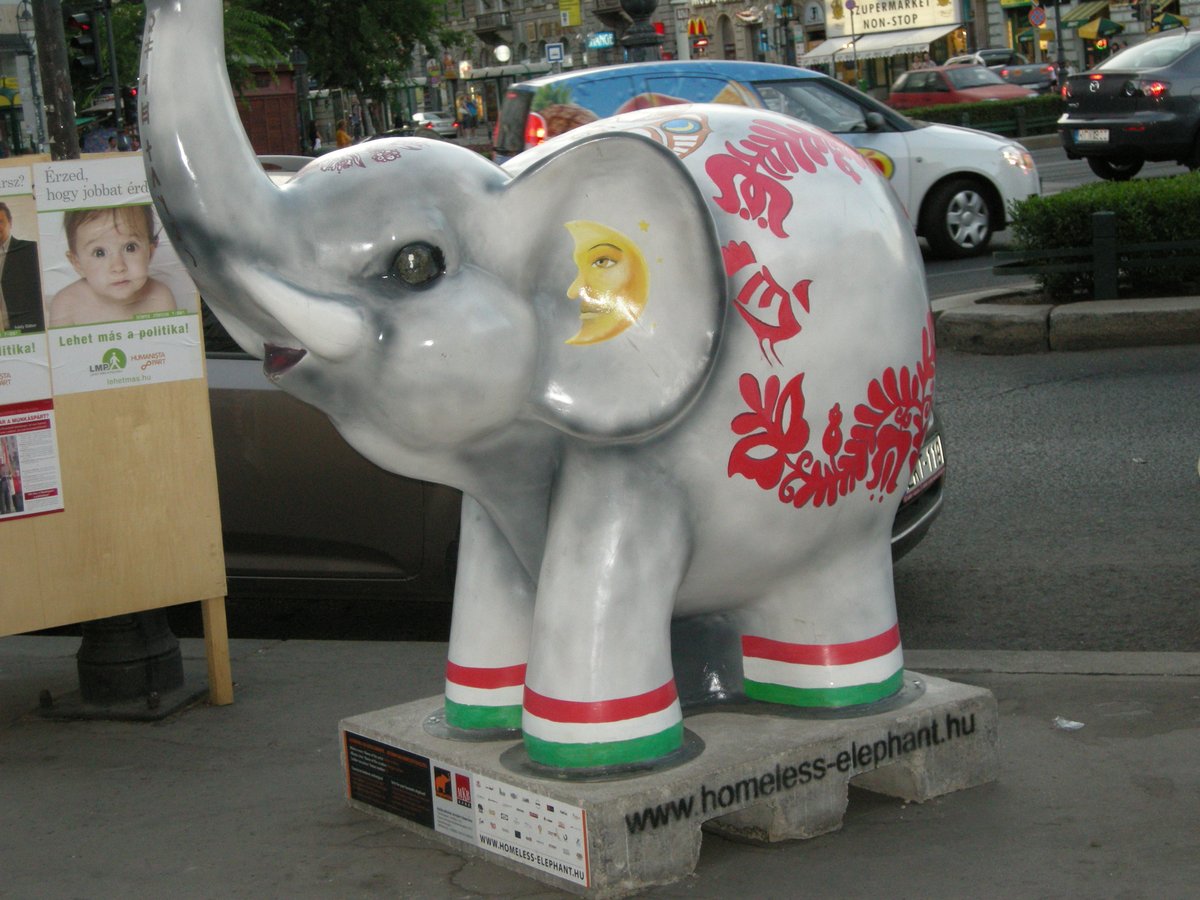
Oktogon Budapest Visiting Hours, Tickets, and Tourist Guide
Date: 14/06/2025
Introduction
Oktogon stands as one of Budapest’s most emblematic intersections, blending rich history, architectural grandeur, and a vibrant urban pulse. Situated at the junction of the UNESCO-listed Andrássy Avenue and the Grand Boulevard (Nagykörút), Oktogon is a testament to Budapest’s transformation from a modest 19th-century pit into a bustling metropolis. Its evolution mirrors the city’s broader narrative—marked by unification, architectural ambition, and dynamic cultural life. This guide provides an in-depth look into Oktogon’s layered past, its architectural and social significance, practical visiting information, and essential tips to help you make the most of your visit (pestbuda.hu, budapestbylocals.com).
Table of Contents
- Introduction
- Historical Background
- Architectural and Cultural Significance
- Visiting Oktogon: Hours, Tickets, and Travel Tips
- FAQ
- Conclusion
- References
Historical Background
Early History and Urban Development
Oktogon’s story is deeply intertwined with Budapest’s own growth. Before the 19th century, this area was a nondescript pit on Pest’s side of the Danube (welovebudapest.com). The city’s history, however, stretches back to ancient times—settled by Romans at Aquincum, followed by centuries of rule by various tribes and empires (budapest-tourist.info, hungarianconsulate.com, architectureofcities.com).
The unification of Buda, Pest, and Óbuda in 1873 marked a turning point, paving the way for ambitious urban development. The construction of Andrássy Avenue (1872–1885), intended to connect the city center with City Park, was a defining achievement of this era (pestbuda.hu).
Oktogon’s 19th Century Transformation
Between 1871 and 1873, the pit at the future Oktogon was filled and four imposing eclectic apartment buildings by Antal Szkalnitzky were constructed, giving the intersection its distinctive octagonal shape (en.wikipedia.org). Originally called Nyolcszög tér (“Eight Corner Square”), it quickly became a vibrant hub of urban life, with shops, cafés, and residences. The name “Oktogon” was officially adopted in the 1920s, reflecting its unique geometry and cosmopolitan spirit (welovebudapest.com).
The Millennium Underground Railway
Oktogon’s international significance was further cemented with the 1896 inauguration of the Millennium Underground Railway (M1)—the first metro line on the European continent, running beneath Andrássy Avenue (justbudapest.com). This engineering marvel, built to celebrate Hungary’s millennial anniversary, introduced advanced transit to the city and showcased Budapest’s modernity. The Oktogon station retains its original 19th-century design elements and is part of the UNESCO World Heritage Site.
Oktogon in the 20th Century
Throughout the 20th century, Oktogon reflected Hungary’s turbulent political landscape. The square’s name changed multiple times—renamed Mussolini tér in 1936 and November 7 Square in 1950—before reverting to Oktogon after the fall of communism in 1990 (en.wikipedia.org). Despite these changes, Oktogon remained a focal point for urban life, culture, and transit.
Architectural and Cultural Significance
Oktogon’s eclectic buildings, especially the former Haggenmacher Palace (now Hotel Oktogon), exemplify Budapest’s 19th-century architectural ambition (theplan.it). The octagonal layout ensures symmetry and openness, facilitating both vehicular and pedestrian movement. The area’s architecture transitions seamlessly into the neo-Renaissance splendor of Andrássy Avenue, lined with grand mansions, theaters, and cultural institutions (justbudapest.com, architectureofcities.com).
Culturally, Oktogon is a gateway to the “Pesti Broadway” (Nagymező utca), with theaters like the Budapest Operetta Theatre and Thália Theatre, and creative spaces such as the Mai Manó House of Photography (budapestbylocals.com).
Visiting Oktogon: Hours, Tickets, and Travel Tips
Hours and Ticketing
- Oktogon Square: Open to the public 24/7, with no entrance fee.
- M1 Metro (Millennium Underground): Operates roughly 4:30 AM–midnight daily. Regular Budapest public transport tickets or passes are required (budapest.hu).
- Nearby Museums and Attractions: Most venues (e.g., House of Terror Museum) are open daily from 10:00 AM to 6:00 PM, often closed on Mondays. Advance booking is recommended for popular sites.
Accessibility and Transportation
Oktogon is one of Budapest’s major transport hubs, accessible by:
- Metro: M1 (yellow line), with elevators and ramps for accessibility.
- Trams: Lines 4 and 6, operating 24/7.
- Buses: Several lines stop at Oktogon, connecting to the wider city (triptobudapest.hu).
- Taxis and Ride-Sharing: Readily available but can be slower during rush hours.
Dining, Shopping, and Nightlife
Oktogon and its surroundings offer a diverse culinary scene, from historic cafés like the Mozart Café to modern eateries and international chains (Budapest Index). Andrássy Avenue is lined with upscale restaurants, bistros, and boutiques, while the Grand Boulevard offers convenience stores and local shops. Vegetarian and vegan options are increasingly available, and English is widely spoken in tourist areas.
Nightlife is vibrant, with easy access to ruin bars, theaters, and live music venues. Summer brings open-air events and festivals, while winter features festive illuminations and nearby Christmas markets (33traveltips.com).
Nearby Attractions
- Hungarian State Opera House: Guided tours and performances in a neo-Renaissance landmark (Worldly Known).
- Andrássy Avenue: Scenic walks toward Heroes’ Square, a UNESCO World Heritage Site.
- Liszt Ferenc Square: Vibrant café scene, ideal for evenings.
- Heroes’ Square and City Park: Accessible by a short metro ride or a pleasant walk (Treksplorer).
Seasonal Events and Best Times to Visit
- Spring (March–May): Pleasant temperatures, blooming trees, and events like the Budapest Spring Festival.
- Summer (June–August): High season with festivals, outdoor cafés, and lively street scenes.
- Autumn (September–October): Mild weather, beautiful foliage, and cultural festivals.
- Winter (November–February): Christmas markets, festive decorations, and fewer crowds.
For a quieter experience, visit in spring or autumn. Book accommodations and tickets in advance during summer.
Photography Tips
Oktogon’s octagonal layout and neo-Renaissance façades are best captured at sunrise or sunset. The historic M1 station entrances and the lively ambiance of the square offer plenty of photo opportunities.
Frequently Asked Questions (FAQ)
Q: What are Oktogon’s visiting hours?
A: The square is open 24/7. Cafés, shops, and museums nearby have varying hours, typically from 8:00 AM to 11:00 PM.
Q: Is a ticket required to visit Oktogon?
A: No ticket is needed for the square. Public transport and nearby museums require tickets.
Q: Is Oktogon accessible for people with disabilities?
A: Yes, with ramps, elevators, and accessible public transport options.
Q: Are there vegetarian or vegan dining options?
A: Yes, most cafés and restaurants near Oktogon offer vegetarian and vegan dishes.
Q: Can I join a guided tour that includes Oktogon?
A: Yes, many city tours feature Oktogon as a highlight, especially those along Andrássy Avenue.
Q: What is the best way to reach Oktogon?
A: Take the M1 metro, trams 4 or 6, or a bus. It’s also walkable from the city center.
Conclusion
Oktogon is more than a crossroads—it is a living symbol of Budapest’s layered history, architectural splendor, and cosmopolitan energy. Its 19th-century transformation, pivotal role in urban transport, and proximity to major attractions make it an essential part of any Budapest itinerary. Visiting Oktogon offers not just a glimpse of the city’s past, but a vibrant experience of its present—through café culture, cultural events, and seamless access to Budapest’s most treasured sites.
For a richer visit, consider guided tours and mobile audio guides such as the Audiala app, which provides insider tips and historical context. Download the app for real-time updates, explore related posts on Budapest’s hidden gems, and follow us on social media for the latest travel inspiration.
References
- See how Oktogon has changed over a century or more (We Love Budapest)
- Andrássy Avenue & Oktogon Guide (Budapest by Locals)
- Oktogon (intersection), Wikipedia
- The Birth of an Iconic Place: Oktogon is 150 Years Old (PestBuda)
- Metro Line 1 Budapest (Just Budapest)
- Budapest Public Transportation Guide (Trip to Budapest)
- Hotel Oktogon Renovation (The Plan)
- Budapest Index: Near Oktogon
- Budapest Known For (Worldly Known)
- One Day in Budapest Itinerary (Treksplorer)
- Budapest Travel Tips (33 Travel Tips)
- Things to Know Before Visiting Budapest (Destination Daydreamer)
